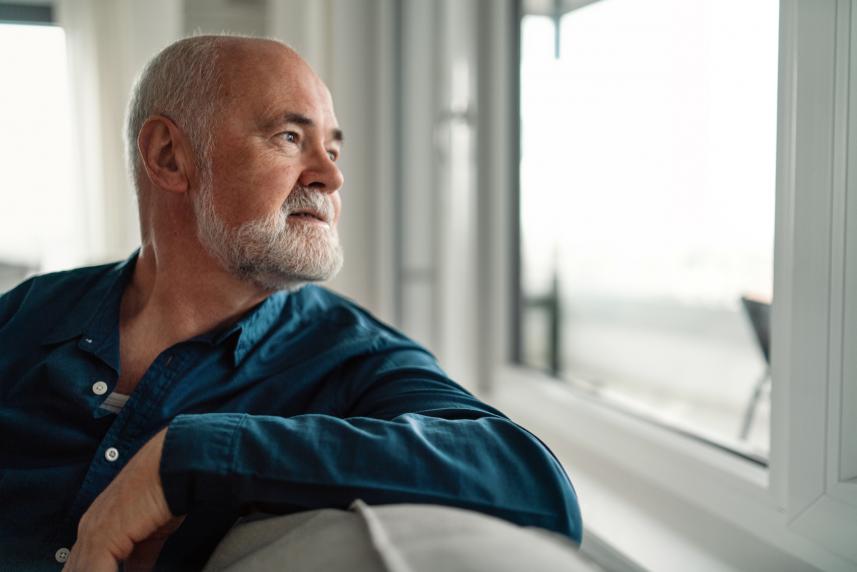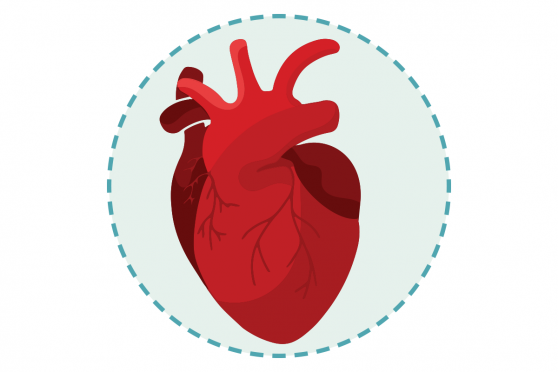Next steps following a prostate cancer diagnosis
Here's what to do to put yourself on track for finding treatment and getting better.

Prostate cancer diagnosis? It’s okay to be scared, anxious, and even angry. But there are loads of options at your disposal — and so many people to help. And remember, you’re in good company. Thousands of men are going through the same experience you are, right now.
Plus, there’s good news: The five-year survival rate for prostate cancer is 99%. “The leading cause of death among most men with prostate cancer is not prostate cancer,” says Stacy Loeb, M.D., professor of urology and population health at NYU Langone Health. “The likelihood that you’ll die of this is extremely low.”
Following a prostate cancer diagnosis, it’s important to discuss a treatment plan with your doctor. Here’s what to do to put yourself on track for finding treatment and getting better.
Step 1: Don’t panic
You’re not alone. In 2019, more than 174,000 men received this same diagnosis. Although you have a challenging road ahead of you, right now, it’s important to simply take a deep breath.
In the meantime, here’s some more good news: Prostate cancer usually grows slowly. Chances are, it’s been quietly sitting inside you, minding its own business for quite a while. So, unless it’s been found at a late stage, there’s no big rush to get it out. “It’s important to address, of course,” says Dr. Loeb, “but it’s not an immediate emergency.”
Step 2: Take your emotional temperature
Are you feeling anxious and depressed? Are you worried about how your prostate cancer treatment might affect your sex life and your relationship with your partner?
It’s normal to feel stressed during this time, but trying to curb anxiousness and fretting can help you in the long run. Research shows that stress can lower the effectiveness of your treatments and accelerate the development of your cancer. What’s more, stressed-out prostate cancer patients are more likely to choose surgery, which may not always be the right option for them, according to research from the State University of New York at Buffalo.
So, it’s important to pay attention to your feelings. And if you’re feeling down, get help.
“There’s a lot of support out there,” says Dr. Loeb. “There are counselors who specialize in depression during and after treatment, and there are also many specialists who help manage side effects from treatment.”
Sometimes, strategies like mindfulness meditation can help. A study from Northwestern University showed that men with prostate cancer reported less anxiety after learning mindfulness meditation techniques. Try a free smartphone app such as Calm. It comes with a week’s worth of meditations for beginners to help you cultivate mindfulness techniques. You can listen to them while you’re in the doctor’s waiting room. There are also meditations to help you sleep better and ease feelings of anxiety.
You can also ask your doctor or nurse about resources or check them out online with organizations like the Prostate Cancer Foundation or ZERO Prostate Cancer, which runs more than 145 peer-led support groups around the country. There are also Facebook support groups where men with prostate cancer can share their experiences and concerns.
“Even if you’re not ready to speak, just go to a meeting and listen,” says Dr. Loeb. “If you’re not comfortable telling your story, simply hearing other people sharing theirs can be good. The one thing I don’t recommend is sitting home and not seeking any help at all if you are having a hard time.”
Step 3: Do your homework
Arm yourself with information about your unique type of prostate cancer. Learn everything you can about possible treatments and side effects. Make sure you have all the important numbers at your fingertips — you can, and should, ask your doctor for your Gleason score, your prostate specific antigen (PSA) level, and the exact stage of your cancer. Bring a pen and paper to your next doctor’s visit or check for these numbers on your medical center’s patient portal.
If you’re doing your research online, be cautious. Trusted sources include the American Cancer Society and the Prostate Cancer Foundation.
Also, stay away from YouTube. Dr. Loeb led a study that looked at more than 100 YouTube videos about prostate cancer and found that 77% had biased or misinformed content. “If you’re not going to reliable, vetted websites, there’s a high probability you’re getting bad information,” says Dr. Loeb.
If you have questions about what you’re learning, be sure to discuss them with your doctor.
Step 4: Get a second opinion
Try to seek advice from more than one doctor, especially if you’re concerned that you haven’t explored all your options, or even if you and your doctor just don’t communicate well.
If you’re going the second-opinion route, says Dr. Loeb, “It’s important to get an opinion from different types of specialists.” She notes that, in addition to a urologist, you should schedule to see a radiation oncologist and a medical oncologist. You can often find all these specialists in one convenient place: an academic medical center. Working with specialists at the same center might also allow you to get multiple medical opinions on the same day.
Many private practices have urologists and oncologists working together under the same roof, too.
You can also ask your first doctor for suggestions. “‘Are there any other types of doctors I should speak to?’ is a useful question,” says Dr. Loeb. Another great resource: the American Society of Clinical Oncology’s Find-a-Doctor tool.
Step 5: Make exercise a priority
Following a prostate cancer diagnosis, the worst thing you can do is sit at home and mope. Get outside and get moving with other people.
In a study conducted by the American Cancer Society, men with prostate cancer who exercised the most were 30% more likely to live longer and healthier lives, compared with those who exercised the least.
That’s no surprise to Dr. Loeb. “The more fit you are, the better you’ll get through your treatments,” she says. “Exercise is especially important if you’re on hormone therapy, which can decrease your muscle mass and increase your fat mass. Plus, it increases your energy and helps to mitigate other side effects.”
You don’t have to run a marathon: One study showed that walking at an easy pace for just three hours a week was enough to reduce the side effects of prostate cancer treatments.
Step 6: Eat healthy
Good nutrition can help you stay stronger during your treatments. A recent study showed that eating a Mediterranean-style diet can help to not only prevent prostate cancer, but also slow its progress. So cut back on red meat, load up your plate with fresh veggies (especially tomatoes), and use olive oil in your cooking.
“Heart disease is the leading cause of death among men with prostate cancer,” says Dr. Loeb. “The prostate cancer diagnosis is often a teachable nutrition and exercise moment, when people are willing and eager to do some lifestyle modification.”
Eat less red meat and more vegetables. Focus on tomato-based dishes with lots of lycopene, which slows inflammation. “There’s no specific diet cure,” Dr. Loeb insists. “But eating well can help you feel better and help increase your longevity in general.”



